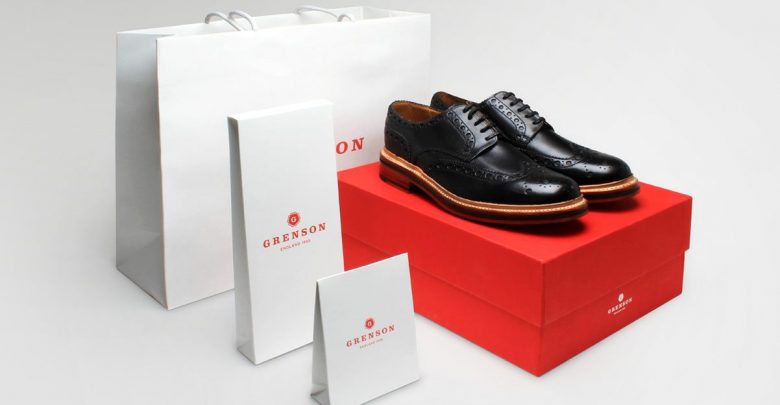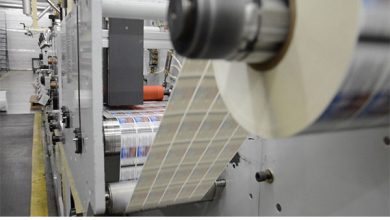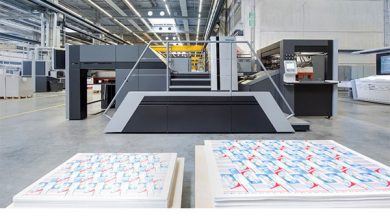Five Ways Packaging Can Make an Impact on Social Media

For marketers, the online world of social media presents an increasingly compelling space to connect with and sell their products. This landscape presents new challenges as well as opportunities and needs to be integrated with the more conventional elements of brand strategies – including printed packaging.
In an exclusive new market report, Smithers surveys how it is affecting the use and supply of packaging. This includes analysis of how packaging companies can innovate to meet current and future end-user demands to remain relevant and bolster brand owners’ presence in social media channels.
In particular social media presents a free and trusted means of marketing for products and packaging that meet the challenge most successfully. Smithers Pira’s analysis identifies the following fives key factors for the packaging industry to consider in navigating the social media space:
#unboxing
Experience packaging – in which the act of opening the pack is viewed by the consumer as part of the overall product experience – is growing. Websites, like YouTube or shares on social media platforms, have created a new forum experience via the unboxing phenomena, with video bloggers (vloggers) generating an audience for videos showing them unpacking a product.
The first unboxing video was posted in 2006. In 2018 YouTube users were uploading the equivalent of 6.5 years of unboxing footage per annum, often via specific channels, with dedicated channels like Unbox Therapy having of 14.5 million subscribers.
Around 37% of online shoppers had watched an unboxing video in 2017 according to Dotcom Distribution. And 28% claimed to have shared an image or video of a product on social media prior to opening it. For younger shoppers, this trend is most pronounced – over 58% of Millennials (aged 25-38) have watched an unboxing video, and almost 80% of consumers from Generation Z (aged 24 and under).
This trend is most pronounced for goods like consumer electronics, especially smartphones; footwear, personal care, and other luxury items. For the packaging designer, the challenge is to create an experience that can hold a viewer’s attention for a 2-4 minute video. This includes the use of luxury materials; sensory experiences, including visual, tactile and even olfactory effects; and innovative designs.
For a packaging converter, the priority is to create a narrative with a design in several steps that leads to the eventual unwrapping of the final product. This requires an integrated approach towards an established goal with minor components leading to an eventual Wow moment at the final unveiling, with the product and packaging shown in a single Instagram-shareable image.
The future imperative here is to continue to innovate in the design phase to present unboxing hosts with new subjects to engage their audiences with; as well as ensuring these align with an individual product’s persona.
#sustainablevalues
Social media sharing presents risks to brands and packaging as well. In particular, it gives a public medium to post critical reviews of products or packaging that fails to match their expectations. Critically this can be done much more easily than conventional means of lodging a complaint such as sending an email, writing a letter, or returning it to a retail store.
The most salient example of this trend has centred around overuse of protective packaging in particular. Environmental NGOs are fluent in the use of social media to publicise their message and it also presents the opportunity for users to become activists in their own right. For example, the Instagram account pointless_packaging has over 31,000 followers and has spawned a series of imitators.
This trend affects both retail and e-commerce packaging, but as the leading global online seller Amazon has been in particular a target for these campaigns. In response, the firm has invested directly in more sustainable solutions. One major step has been to move away from standard size corrugated boxes to fit-to-product corrugated board concepts. It has been estimated that half of the deliveries using a standard 0201 box with void-fill material ships up to 55% empty space.
The concept of creating a box around a shipment, which could contain one or more products of various shapes and sizes, is gaining traction and a number of systems are on the market – including major packaging names such as DS Smith, Stora Enso, and WestRock. These machines can be upgraded to automatically measure and optimise the packaging solution for each individual order, giving time and cost savings.
In May 2019 Amazon reported it was investing in CartonWrap 1000 equipment from Italy’s CMC Machinery at 55 of its distribution centres across the US. These are reported to be up to 5 times faster than a human operator and could replace the need for 24 workers at each of these facilities.
Another option in e-commerce channels is to use die-cut corrugated interior components to hold the goods under shipment. Digital cutting equipment can produce these fixtures without the need for skilled labour, and the overall effect can contribute to the final presentation to the customer.
#newbusinessmodels
The Internet has created a boom for smaller businesses selling bespoke goods via e-commerce channels, with page likes and recommendations shared by customers via social media much faster than conventional word of mouth. These smaller businesses demand bespoke packaging that preserves these core values, as well as being available at short notice and in much smaller order numbers. For packaging suppliers who can supply these and include features that support this personal connection, the margins can be impressive.
Major brands are now following this trend with new business units and integrated services. In May 2019 L’Oreal unveiled its new direct-to-consumer Color&Co hair colouring product. The customer experience starts with a personalised video consultation via Skype or a similar platform. In this his or her complexion, natural hair tone, and preferences are discussed, before a recommendation is made.
The hair dye and application accessories are then dispatched in an e-commerce corrugated box, including a personalised greeting message and product labels. Interestingly the pack has a more utilitarian feel than much of L’Oreal retail brand packaging, which can help differentiate Color&Co as a product personalised to the end-user.
#influencers
Brands have traditionally pursued celebrities and sports stars to promote their goods. On social media there is a new class of individuals whose consumer follow – social media influencers. While some of these are celebrities in their own right, many owe their profile and influence solely to the activities in social media channels. The individuals have the greatest pull with younger female consumers, for products like clothing and personal care items.
Research has shown that compared to other digital marketing tactics, influencer marketing can deliver a return on investment ten times higher. Influencers can promote a brand in a number of ways from photos or videos promoting a product, or becoming a named brand ambassador; to the use of specific hashtags to spread interest in a product. They can also leverage their network with other social media influencers to rapidly expand a brand’s social media profile.
For this to happen effectively branded packaging has to be photogenic enough to capture interest in a single photo and align with the persona of the social media influencers. Brands are now regularly sending out personalised packs to targeted social media figures in the hope of gaining a feature on their news feed. This type of personal connection can be made by using digital print systems to add individual messages to packaging.
#counterfeiting
The explosion of e-commerce has been a boon for counterfeiters of goods, presenting an easily accessible sales channel that crosses enforcement boundaries with ease. Counterfeiters are increasingly using social media – Facebook, Instagram, and WeChat – as a means to sell fake or grey market goods.
While many buyers are aware of the dubious origin of goods bought in this way at a discount price, some are not. Thus there needs to be a means for the customer to verify the authenticity of a good they have purchased, without normal retail cues. In the brand protection industry, a major trend is toward the development of authentication platforms that use a consumer’s own smartphone.
These are typically based on familiar and easy to use QR code linked to a company website that verifies a product is genuine. The simplicity of the QR code means it is very easy for a competent counterfeiter to copy – indeed it is easier than most standard materials or brand graphics. Hence there is a trend to integrate holographic or other dedicated anti-counterfeiting materials into QR codes. This simultaneously requires the evolution of dedicated smartphone software that can verify these features.
Once a fake good is detected, social media does provide a ready medium for the consumer to take action either themselves or by contacting the brand users’ online marketing team.




